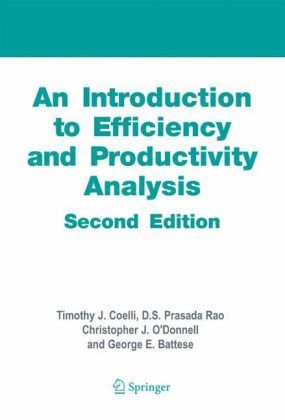

Most ebook files are in PDF format, so you can easily read them using various software such as Foxit Reader or directly on the Google Chrome browser.
Some ebook files are released by publishers in other formats such as .awz, .mobi, .epub, .fb2, etc. You may need to install specific software to read these formats on mobile/PC, such as Calibre.
Please read the tutorial at this link: https://ebookbell.com/faq
We offer FREE conversion to the popular formats you request; however, this may take some time. Therefore, right after payment, please email us, and we will try to provide the service as quickly as possible.
For some exceptional file formats or broken links (if any), please refrain from opening any disputes. Instead, email us first, and we will try to assist within a maximum of 6 hours.
EbookBell Team

4.7
16 reviewsThe second edition of An Introduction to Efficiency and Productivity Analysis is designed to be a general introduction for those who wish to study efficiency and productivity analysis. The book provides an accessible, well-written introduction to the four principal methods involved: econometric estimation of average response models; index numbers, data envelopment analysis (DEA); and stochastic frontier analysis (SFA). For each method, a detailed introduction to the basic concepts is presented, numerical examples are provided, and some of the more important extensions to the basic methods are discussed. Of special interest is the systematic use of detailed empirical applications using real-world data throughout the book.
In recent years, there have been a number of excellent advance-level books published on performance measurement. This book, however, is the first systematic survey of performance measurement with the express purpose of introducing the field to a wide audience of students, researchers, and practitioners. Indeed, the 2nd Edition maintains its uniqueness: (1) It is a well-written introduction to the field. (2) It outlines, discusses and compares the four principal methods for efficiency and productivity analysis in a well-motivated presentation. (3) It provides detailed advice on computer programs that can be used to implement these performance measurement methods. The book contains computer instructions and output listings for the SHAZAM, LIMDEP, TFPIP, DEAP and FRONTIER computer programs. More extensive listings of data and computer instruction files are available on the book's website: (www.uq.edu.au/economics/cepa/crob2005).